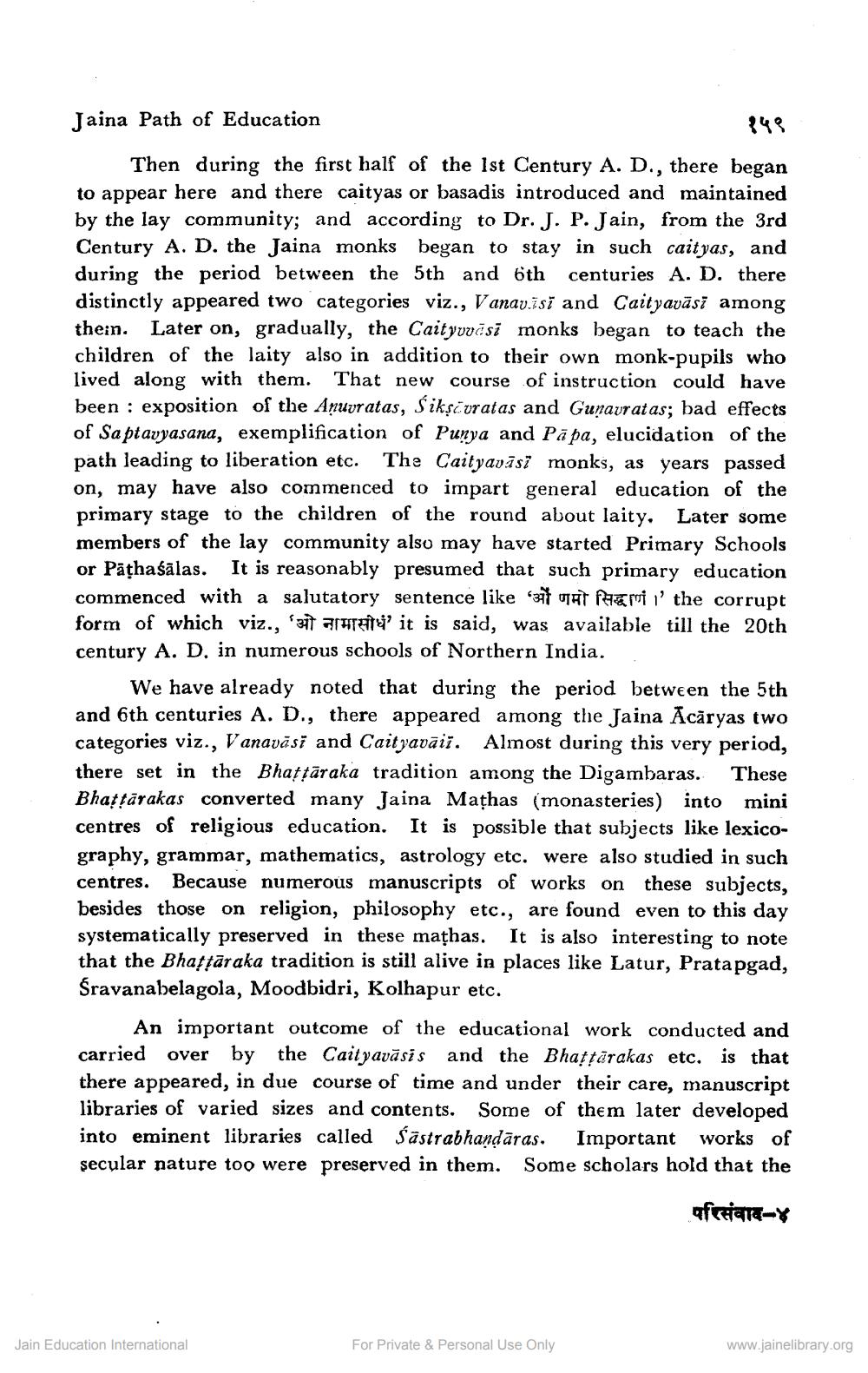Book Title: Jaina Path Of Education Author(s): B K Khadabadi Publisher: Z_Jain_Vidya_evam_Prakrit_014026_HR.pdf View full book textPage 3
________________ Jaina Path of Education १५९ Then during the first half of the 1st Century A. D., there began to appear here and there caityas or basadis introduced and maintained by the lay community; and according to Dr. J. P. Jain, from the 3rd Century A. D. the Jaina monks began to stay in such caityas, and during the period between the 5th and 6th centuries A. D. there distinctly appeared two categories viz., Vanav.žsi and Caityavāsi among thein. Later on, gradually, the Caityvusi monks began to teach the children of the laity also in addition to their own monk-pupils who lived along with them. That new course of instruction could have been : exposition of the Anuvratas, Śikṣcuratas and Gunavratas; bad effects of Saptavyasana, exemplification of Punya and Pā pa, elucidation of the path leading to liberation etc. The Cait yavāsimonks, as years passed on, may have also commenced to impart general education of the primary stage to the children of the round about laity. Later some members of the lay community also may have started Primary Schools or Pathaśālas. It is reasonably presumed that such primary education commenced with a salutatory sentence like 377 OAT FHEM 1' the corrupt form of which viz., ait arat it is said, was available till the 20th century A. D. in numerous schools of Northern India. We have already noted that during the period between the 5th and 6th centuries A. D., there appeared among the Jaina Acāryas two categories viz., Vanavāsi and Cait yavāii. Almost during this very period, there set in the Bhattāraka tradition among the Digambaras. These Bhattārakas converted many Jaina Mathas (monasteries) into mini centres of religious education. It is possible that subjects like lexicography, grammar, mathematics, astrology etc. were also studied in such centres. Because numerous manuscripts of works on these subjects, besides those on religion, philosophy etc., are found even to this day systematically preserved in these mathas. It is also interesting to note that the Bhattāraka tradition is still alive in places like Latur, Pratapgad, Sravanabelagola, Moodbidri, Kolhapur etc. An important outcome of the educational work conducted and carried over by the Cait yavāsis and the Bhattarakas etc. is that there appeared, in due course of time and under their care, manuscript libraries of varied sizes and contents. Some of them later developed into eminent libraries called Sastrabhandaras. Important works of secular nature too were preserved in them. Some scholars hold that the परिसंवाद-४ Jain Education International For Private & Personal Use Only www.jainelibrary.orgPage Navigation
1 2 3 4 5 6 7 8
